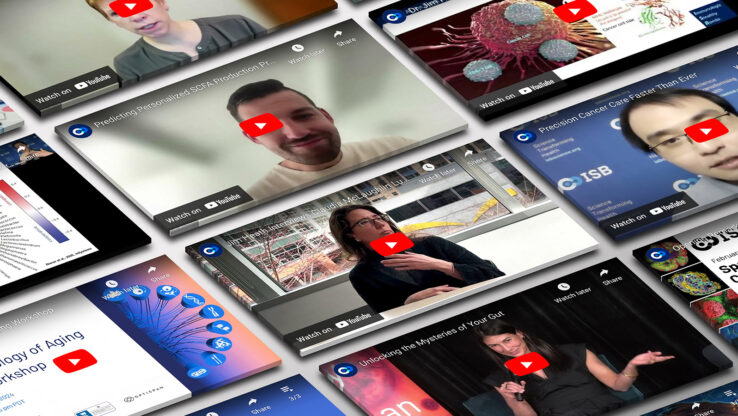How Systems Biology Is Helping Advance the Cultivated Meat Industry
 isbscience.org/news/2021/12/15/how-systems-biology-is-helping-advance-the-cultivated-meat-industry/
isbscience.org/news/2021/12/15/how-systems-biology-is-helping-advance-the-cultivated-meat-industry/
Cultivated meat is grown in a lab vs. farms, fields and feedlots. There have been a number of breakthroughs with cultivated meat in past years – a lab-grown hamburger was unveiled in 2013 to a flurry of media fanfare, several companies have sprung up, billions of dollars have been invested, and in December 2021, a 4-ounce steak created with 3-D printing was announced.
Despite the advances, the quest to create cultivated meat has been a true multidisciplinary puzzle. It’s biology, engineering, physics, bioinformatics, mathematics, computer science, and more.
Enter systems biology.
ISB, Biocellion, and several other organizations have been toiling to better understand how to create lab-grown meat in a safe, effective manner that can eventually scale up to compete with traditional meat. The ultimate goal is to create different forms of meat – beef, chicken, fish, etc. – in a way that is more sustainable for the environment and that improves animal welfare. It also needs to have price parity with conventional meat.
ISB recently received a grant from The Cultivated Meat Modeling Consortium (CMMC), which aims to develop computational modeling approaches the cultivated meat industry can use to optimize growth processes and product characteristics.
“Enhancing the biomass of lab-grown meat is an engineering problem. We are using computer models to solve this,” said ISB Professor Dr. Ilya Shmulevich. “The types of modeling approaches that we have been developing in cancer research are now being used for cultivated meat,” he said.
A major computer modeling focus being used is the digital twin. The idea is to use real-world data in computer programs to create simulations to predict how growing cultivated meat can be most effective. Digital twins were first used in aerospace, and have moved into healthcare, cancer, and now cultivated meat.
In the video above, ISB Senior Research Scientist Dr. Cory Funk talks about digital twins and how the technology is used in biomedical research.
Cultivated meat is grown in bioreactors, where cells glom onto little balls moving around the bioreactor. But factors like spinning rate, turbulence and shear stress interfere with cell growth, and running independent lab experiments to determine optimal conditions are both costly and time consuming.
ISB is working with Biocellion to simulate the growth process with agent-based modeling.
”ISB is a renowned world leader in systems biology. We are excited to be partnering with Ilya, ISB Senior Research Scientist Boris Aguilar, and others to tap their expertise and passion to develop in silico models of cells that we and our CMMC partners will integrate into whole-system models of bioreactors,” said Biocellion President Dr. Simon Kahan. “Biocellion SPC created the CMMC in 2019 to bring together diverse academic and industry stakeholders including Aleph Farms, Brown University, Good Food Institute, Merck, KGaA, Darmstadt, Netherlands eScience Center, and others to accelerate progress in cultivated meat using computer modeling. These digital twins will enable the cultivated meat industry to get affordable high-quality products to market sooner, addressing critical issues facing us all, including water conservation and global warming.”
The entire cultivated meat industry clearly has a number of hurdles in front of it, including creating a product people will want to consume, getting governmental approval to sell it, and driving costs lower to be competitive with conventional meat products. But Shmulevich believes it will happen. And when it does, he predicts a speedy transition, similar to the adoption of cellphones and personal computers.
“At some point, it will happen quickly,” he said. “Humans have shown time and time again that they can overcome, be creative and ingenious, and find ways around problems. We are not deterred. There is lots to be done, and computational modeling can be an accelerant.”





